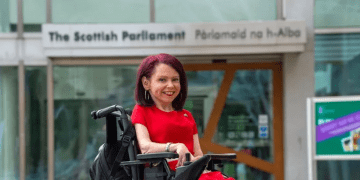The September CPI figure published in October will determine the annual uprating for DWP disability benefits.

Personal Independence Payment (PIP) – information
The Department for Work and Pensions (DWP) recently announced plans to reform Personal Independence Payment (PIP) have been put on hold until a review into the current assessment process has been conducted, expected to be completed by next Autumn. However, DWP also confirmed that the disability benefit will continue to rise each year in line with the September inflation rate.
This is due to be published in mid-October with the benefit uprating confirmed at the Autumn Budget. The latest Office for National Statistics (ONS) figures show that the Consumer Prices Index (CPI) inflation rate for May was 3.4 per cent.
If the CPI inflation rate stayed at 3.4 per cent, people on the highest awards of the daily living and mobility components of PIP would see payments rise from £749.80 every four-week payment period to £775.20, a boost of £25.40.
READ MORE: DWP fraud and error report finds people on PIP may be due more moneyREAD MORE: DWP could stop PIP payments or entitlement if you holiday abroad this summer
PIP or ADP is currently worth between £29.20 and £187.45 each week, some £116.80 or £749.80 every four-week pay period.
An uprating of 3.4 per cent would see payments be worth between £30.20 and £193.80 every week, some £120.80 and £775.20 every four-week payment period.
It’s important to remember there are still four more CPI inflation rates to be announced by the ONS before we know for certain how much PIP, Attendance Allowance and Disability Living Allowance will increase from April 2026.
Being aware of the impact of CPI inflation rates now can help make it easier to understand the annual uprating process before the Autumn Budget.
PIP payment rate predictions 2026/27
PIP would be paid at the following amounts per week under 3.4 per cent CPI uprating:
Daily living
- Standard rate: £73.90 (£76.40)
- Enhanced rate: £110.40 (£114.15)
Mobility
- Standard rate: £29.20 (£30.20)
- Enhanced rate: £77.05 (£79.65)
The next ONS CPI inflation rate is due to be published on July 16.
The latest figures from the Department for Work and Pensions (DWP) show there are now over 3.7 million people across Great Britain receiving additional financial support through PIP.
Similar data published by Social Security Scotland indicates over 476,200 people are now receiving Adult Disability Payment (ADP), the devolved benefit which has replaced PIP north of the border.
Many people may be unaware that PIP and ADP can provide support for over 530 health conditions. Both benefits could help people with daily living tasks or moving around, or both.
However, it would not be beneficial to list all 536 conditions recorded by DWP during the PIP application process as an award for the disability benefit is determined by how a person’s health condition affects their ability to perform daily living tasks such as cooking, washing, eating, dressing and engaging with other people in a safe and timely way.
There are also awards to help if you have difficulty moving around. This means that every claim for PIP or ADP is unique for each applicant, which could also help people thinking about making a new claim to start the process.
Below is a full overview of PIP and ADP, including the five most-claimed conditions and the main disabling conditions, as classified by the DWP.
PIP cannot be backdated, but payments start from the date the claim was submitted, to cover the handling time at the DWP.
Total number of categories, recorded by DWP:
- Disability category – 21
- Disability Sub Group – 178
- Disability – 536
Five most-claimed PIP health conditions
The five most commonly recorded disabling conditions for claims under normal rules are:
- Psychiatric disorder – 39% of claims
- Musculoskeletal disease (general) – 19% of claims
- Neurological disease – 13% of claims
- Musculoskeletal disease (regional) – 12% of claims
- Respiratory disease – 4% of claims
PIP and ADP can provide weekly financial support to people with additional costs due to a disability, long-term illness, or physical or mental health condition.
Many people may be unaware that PIP and ADP can provide support for hundreds of health conditions. Both benefits could help people with daily living tasks or moving around, or both.
Disabling conditions recorded by DWP
These are the main disability categories, the umbrella term by which more than 530 other conditions fall under. This list is only an overview of conditions, disorders and diseases and how the DWP lists the main disabilities being claimed for.
- Haematological Disease
- Infectious disease
- Malignant disease
- Metabolic disease
- Psychiatric disorders
- Neurological disease
- Visual disease
- Hearing disorders
- Cardiovascular disease
- Gastrointestinal disease
- Diseases of the liver, gallbladder, biliary tract
- Skin disease
- Musculoskeletal disease (general)
- Musculoskeletal disease (regional)
- Autoimmune disease (connective tissue disorders)
- Genitourinary disease
- Endocrine disease
- Respiratory disease
- Multisystem and extremes of age
- Diseases of the immune system
- Unknown or missing
Even though new claims for PIP have been replaced in Scotland by ADP, it shares most of the same eligibility criteria. Full guidance on ADP can be found on the MYGOV.SCOT website here.
Who might be eligible for PIP or ADP?
To be eligible for PIP or ADP, you must have a health condition or disability where you:
- have had difficulties with daily living or getting around (or both) for 3 months
- expect these difficulties to continue for at least 9 months
You usually need to have lived in the UK for at least two of the last three years and be in the country when you apply.
In addition to what we have outlined above, if you get or need help with any of the following because of your condition, you should consider applying for PIP or ADP.
- preparing, cooking or eating food
- managing your medication
- washing, bathing or using the toilet
- dressing and undressing
- engaging and communicating with other people
- reading and understanding written information
- making decisions about money
- planning a journey or following a route
- moving around
There are different rules if you are terminally ill, you will find these on the GOV.UK website here.
DWP or Social Security Scotland will assess how difficult you find daily living and mobility tasks. For each task they will look at:
- whether you can do it safely
- how long it takes you
- how often your condition affects this activity
- whether you need help to do it, from a person or using extra equipment
How are PIP and ADP paid?
PIP and ADP are usually paid every four weeks unless you are terminally ill, in which case it is paid weekly. It will be paid directly into your bank, building society or credit union account. ADP is paid at the same rates as PIP.
PIP and ADP payment rates
You will need an assessment to work out the level of financial help you will receive and your rate will be regularly reviewed to make sure you are getting the right support. Payments are made every four weeks.
PIP is made up of two components:
Whether you get one or both of these and how much depends on how severely your condition affects you. For the weekly rates, see the guide already mentioned in this article.
How you are assessed
You will be assessed by an independent healthcare professional to help the DWP determine the level of financial support, if any, you need, for PIP.
Face-to-face consultations for health-related benefits are offered alongside video calls, telephone and paper-based assessments – it’s important to be aware that the health professional and DWP determine which type of assessment is best suited for each claimant. You can find out more about DWP PIP assessments here.
Adult Disability Payment assessments will not involve face-to-face assessments, unless this is preferred by the claimant – find out more about the changes here.
How do you make a claim for PIP?
You can make a new claim by contacting the DWP, you will find all the information you need to apply on the GOV.UK website here.
Before you call, you will need:
- your contact details
- your date of birth
- your National Insurance number – this is on letters about tax, pensions and benefits
- your bank or building society account number and sort code
- your doctor or health worker’s name, address and telephone number
- dates and addresses for any time you’ve spent abroad, in a care home or hospital
How to apply for ADP
People can apply for ADP, over the phone, by post or in-person. To find out more or apply, visit the dedicated pages on mygov.scot here or call Social Security Scotland on 0800 182 2222.


















































